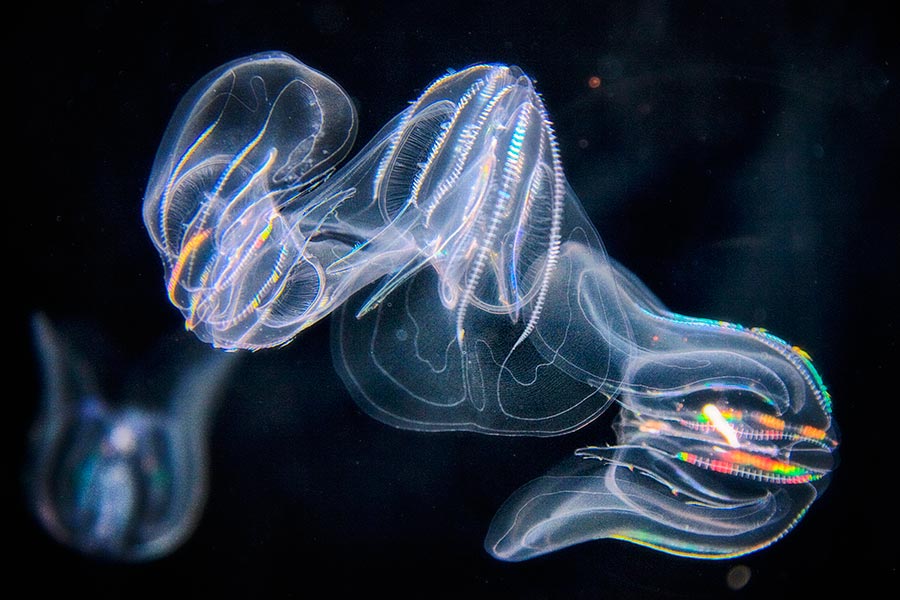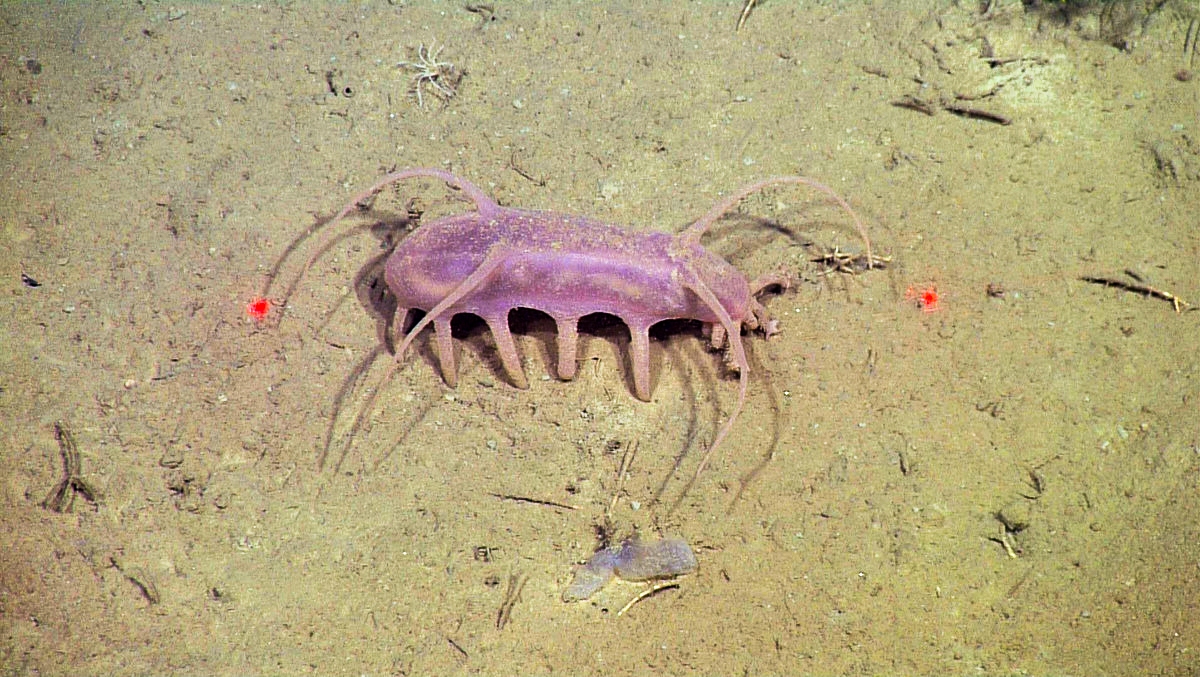
Sea Pig
This mysterious creature is not a pig but actually a type of sea cucumber! They’re called Sea Pigs because of their plump bodies, pinkish coloring, short legs, and love of the muddy seafloor. Sea Pigs spend their days crawling around the seafloor stuffing their little mouths with pieces of decaying animals and dead algae.
Bloodybelly Comb Jelly
The Bloodybelly Comb Jelly, also known as Lampocteis cruentiventer, a type of jellyfish that looks like some kind of razzle-dazzle alien. Don’t let its creepy name keep you from admiring this stunning crimson creature! The bloodybelly gets its name from its bright red stomach, which is visible through its transparent heart-shaped body. Being red in the deep-sea is a huge advantage when it comes to hiding from predators. Red light disappears at these ocean depths, so it’s like putting on a cloak of invisibility!

Deep Sea Anglerfish
The Deep Sea Female Anglerfish has an enormous head, sharp teeth, and a glowing lure- called an esca- hanging right above their giant mouth. They use the warm, inviting light from their lures to attract prey as well as mates. How do their lures glow like that? The female anglerfish has a symbiotic relationship with millions of tiny bioluminescent bacteria that live inside of their esca- woah! The male anglerfish has no lure at all and are much smaller.

Japanese Spider Crab
This leggy crustacean has 10 legs with a massive leg span of up to 12 feet from claw to claw. They might look scary, but they’re quite slow and only eat decaying things. Young Japanese Spider Crabs can even look a bit silly sometimes as they occasionally dress themselves up with marine plants, potentially to try and trick predators.
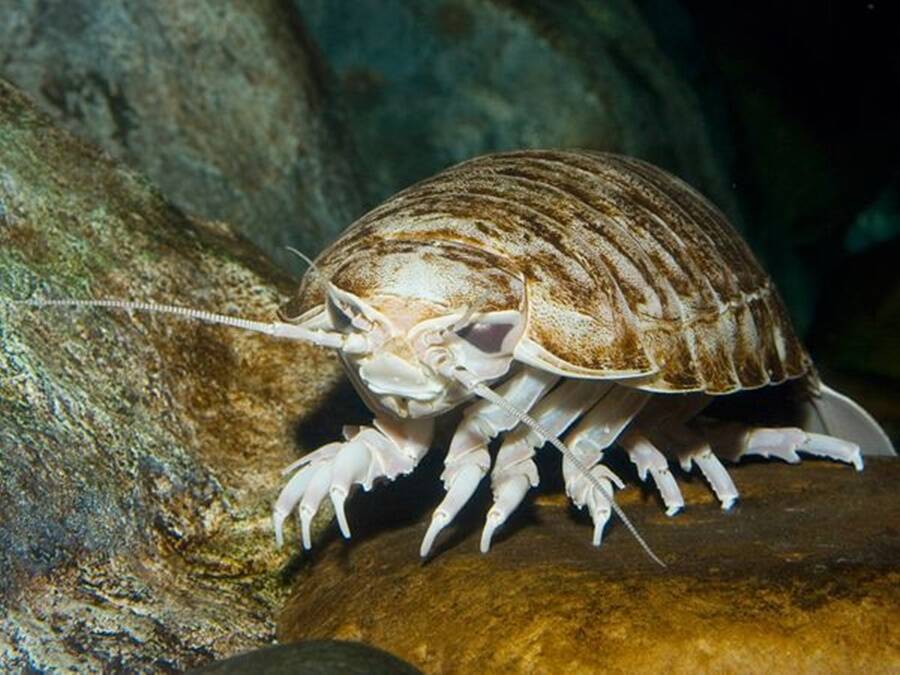
Giant Isopod
Giant Isopods are like the pillbugs you might find in your garden- but as big as a cat! Unlike a cat, they have a hard exoskeleton that protects their body and allows them to withstand the immense pressure at the bottom of the ocean. Similar to rolly pollies, they will sometimes roll up into a tight ball.

Wobbegong
This shark might remind you of a dusty old rug sitting in the attic. The Wobbegong is a type of “carpet shark” that has a flat, wide body and a frilly beard that helps them stay camouflaged on the seafloor where they live.
Gulper Eel
Gulper Eels can open their jaws so wide that they can swallow food twice as big as they are! Their mouths and stomachs stretch to fit it all in. Gulper Eels are sometimes called the “Pelican Eel” because of how they use their mouths like a pelican uses their beak to scoop up prey. They can also scare off predators by gulping so much water that they blow up like big, fishy balloons.
Giant Squid
Giant Squids can be as heavy as a cow and twice as long as a giraffe! They have big eyes to match their big bodies too; at up to 10 inches in diameter, they have the largest eyes in the whole animal kingdom! They glow to lure in prey and then grab their food with hooks on their tentacles and arms.
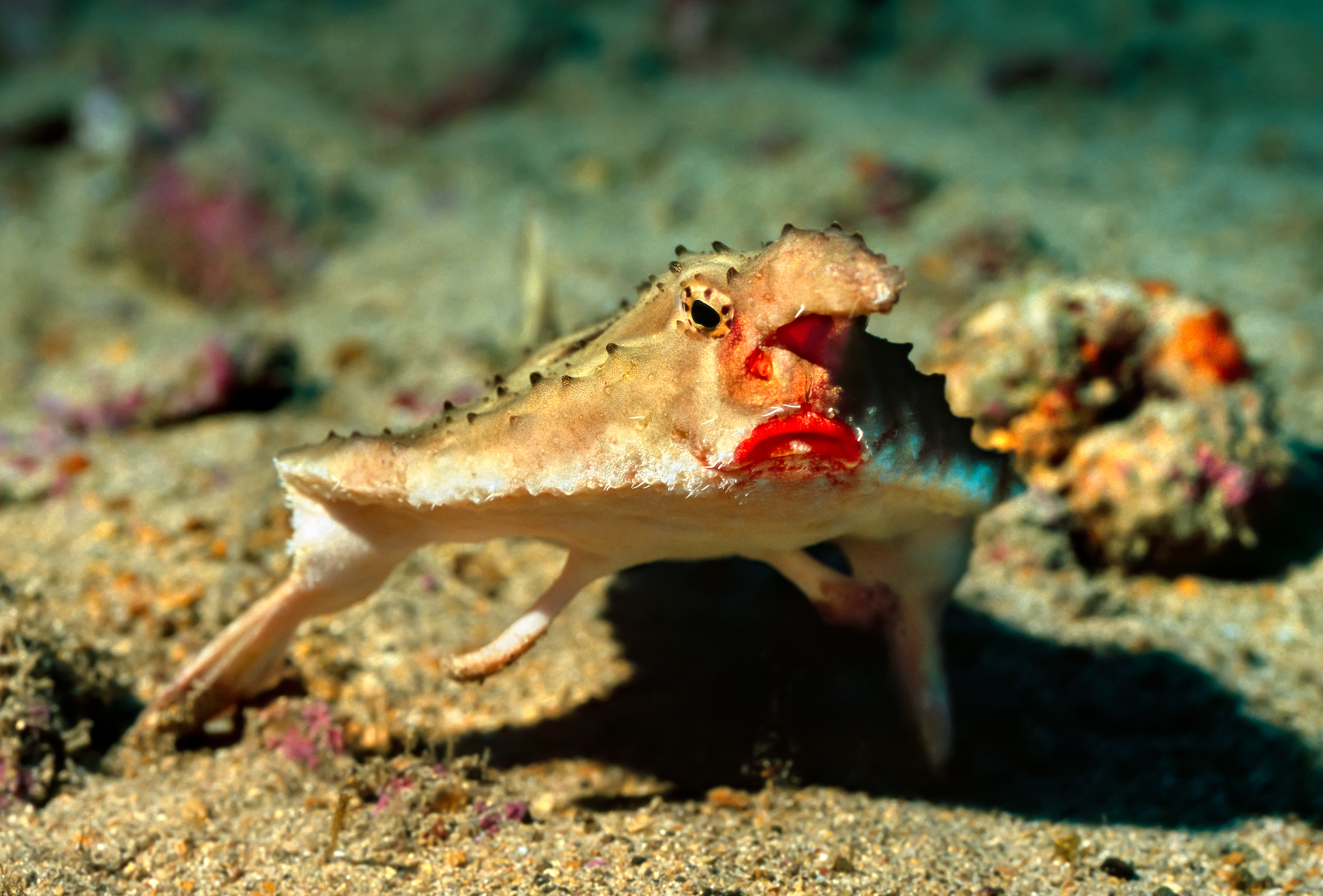
Red-Lipped Batfish
The Red-Lipped Batfish is always ready for their close-up! Va va voom! This fish has got a pouty red mouth that makes them look like they’re wearing permanent red lipstick. They’re very poor swimmers, so they use their modified fins to strut along the seafloor.
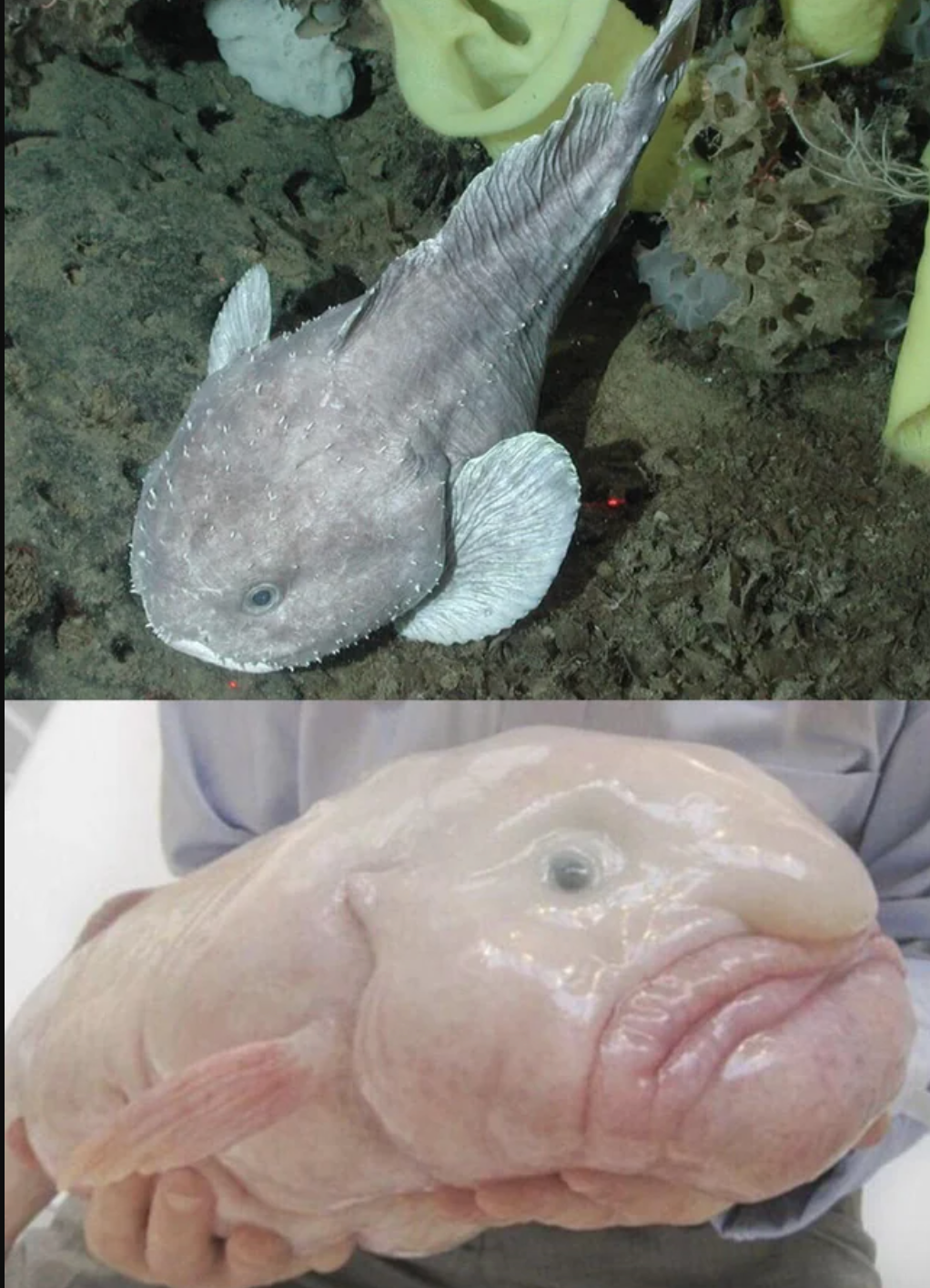
Blobfish
Gelatinous, flabby, and essentially boneless… the blobfish gets the structural support it needs from its extremely pressurized underwater environment. Even though they don’t have a swim bladder like most fish, because their bodies are slightly less dense than water they are able to float right above the ocean floor. Did you know the blobfish is even the mascot of The Ugly Animal Preservation Society (and yes… that is a real society that focuses on the conservation of “ugly” animals). While people may see its photograph taken on land (low pressure) and find it unattractive, it’s important to remember that the blobfish actually looks quite different in its (high pressure) natural habitat.
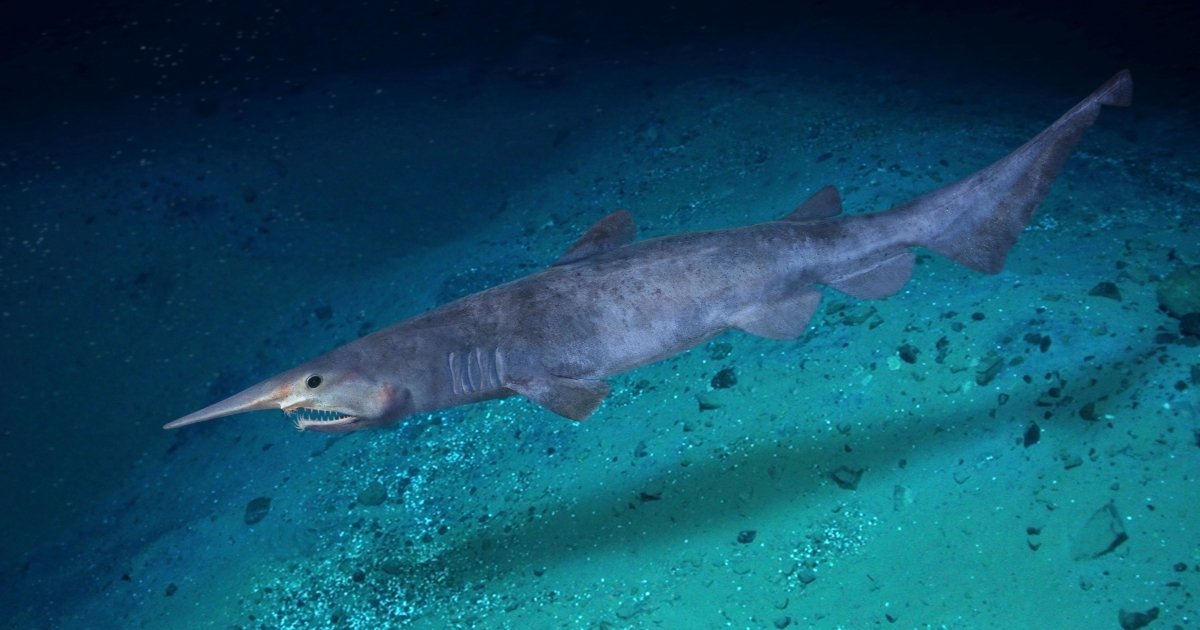
Goblin Shark
Goblin Sharks are creepy pinkish fish that have an eye-catching snout that’s dotted with sensing organs called ampullae of Lorenzini. The sensing organs can pick up the electric field from other fish, which helps the shark locate its prey. Something unique about this shark is that it cannot fit all of its teeth in their mouth, so even when its mouth is closed many of its teeth still show. Goblin Sharks tend to be slow-moving, so their mouths have adapted to help them catch up to their prey; their jaws are stretchy and can extend dramatically forward!
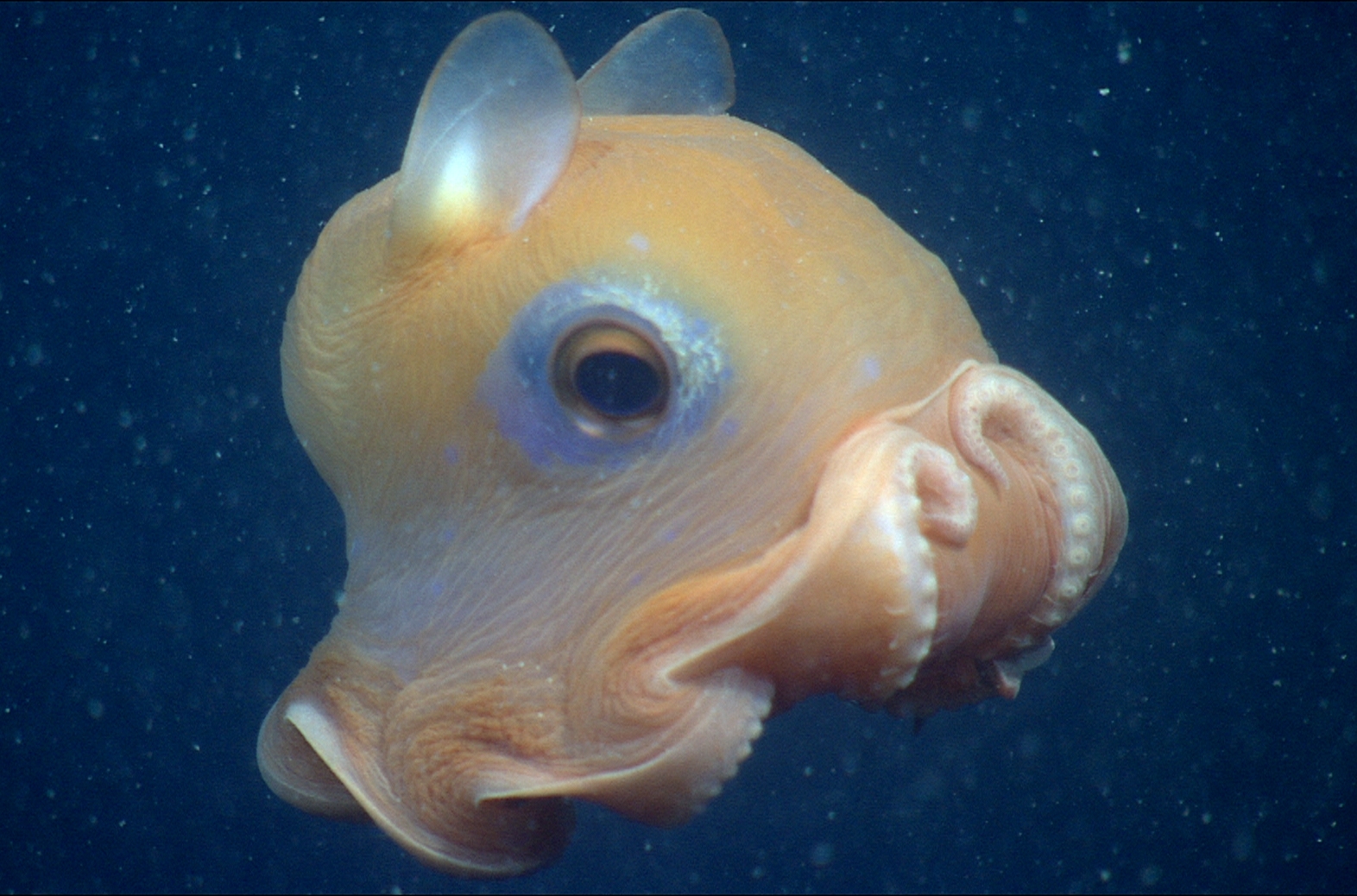
Flapjack Octopus
This next little creature is pretty cute. The Flapjack Octopus is typically found laying flat like a lumpy, orange pancake on the seafloor. They’re a bit different from other types of octopuses as they’re part of a special group known as cirrate octopods. These unique octopods have webbing between their arms and fins that resemble itsy-bitsy elephant ears; both are used to help them swim or float. They can’t change their coloring or skin texture, they don’t have an ink sac, and they don’t have radulas (a tongue-like organ with lots of small teeth that help rip up food).

Barreleye Fish
At first glance, you might think a Barreleye Fish’s eyes are the blackish circles on the front of its head, but its eyes are actually the luminous green orbs facing upwards inside the transparent section of its forehead. By having its eyes positioned this way, this rare fish can spot its next meal above in the water column. Scientists originally thought its eyes were essentially stuck always looking up, but it has been discovered that the Barreleye can rotate its sensitive eyes forward to help it see its food as it eats. Neat!
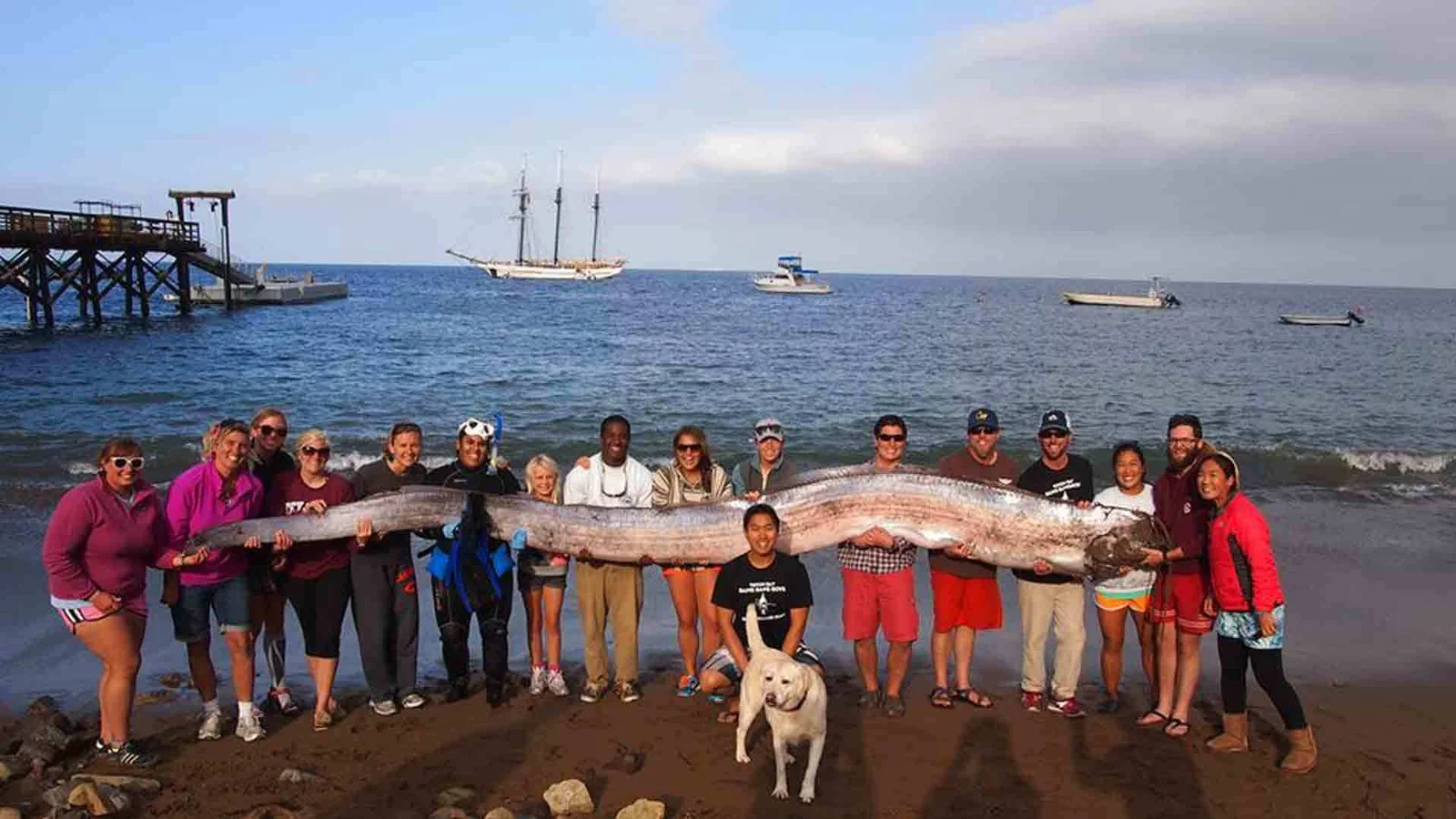
Oarfish
Silvery, ribbony, oarfish can grow up to 50 feet (15m) long: giving it the title of the world’s longest bony fish. It’s easy to see why, long ago, people might have mistaken them for sea serpents.

Deep Sea Hatchetfish
The Deep Sea Hatchetfish looks like it has seen enough to last a lifetime… and then some. Their tortured faces are not the only noteworthy trait of these marine animals. These fish have developed special adaptations that keep them cleverly hidden from predators. In addition to their narrow body and reflective scales, Deep Sea Hatchetfish have photophores (organs that produce light by a chemical reaction) on their bellies. The photophores camouflage their shadows by emitting light that matches the color and level of light surrounding them, making them almost imperceptible!
Are you interested in learning why deep-sea animals look so weird? Check out this awesome video from our friends at The Monterey Bay Aquarium!
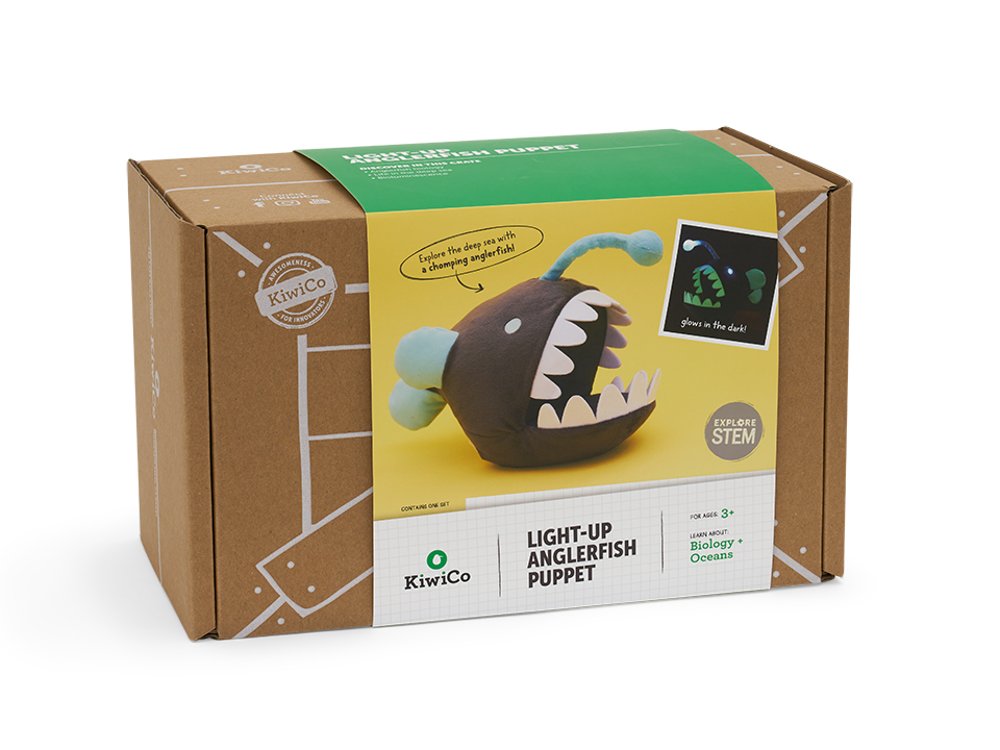
If you're ready to explore even more creatures of the deep, some truly amazing adaptations, and the science of bioluminescence, give our Light-Up Anglerfish Puppet a try!
